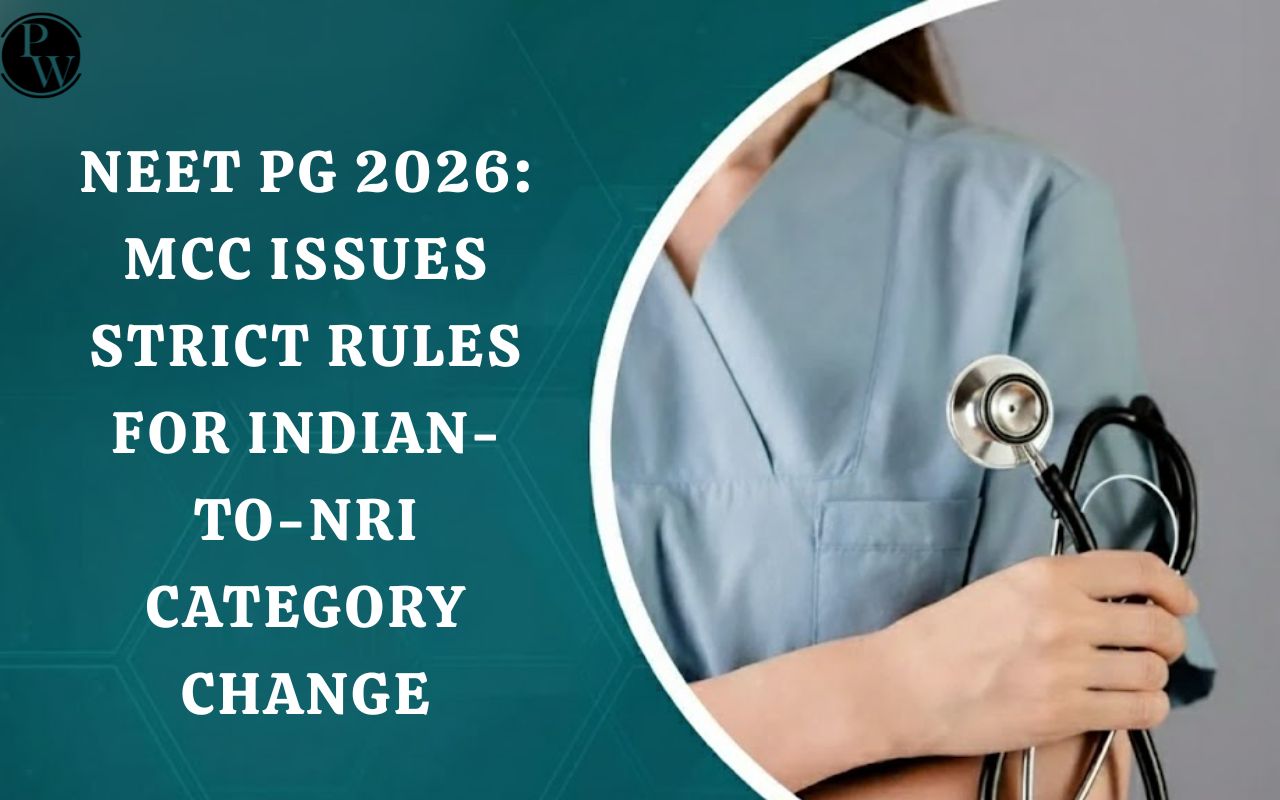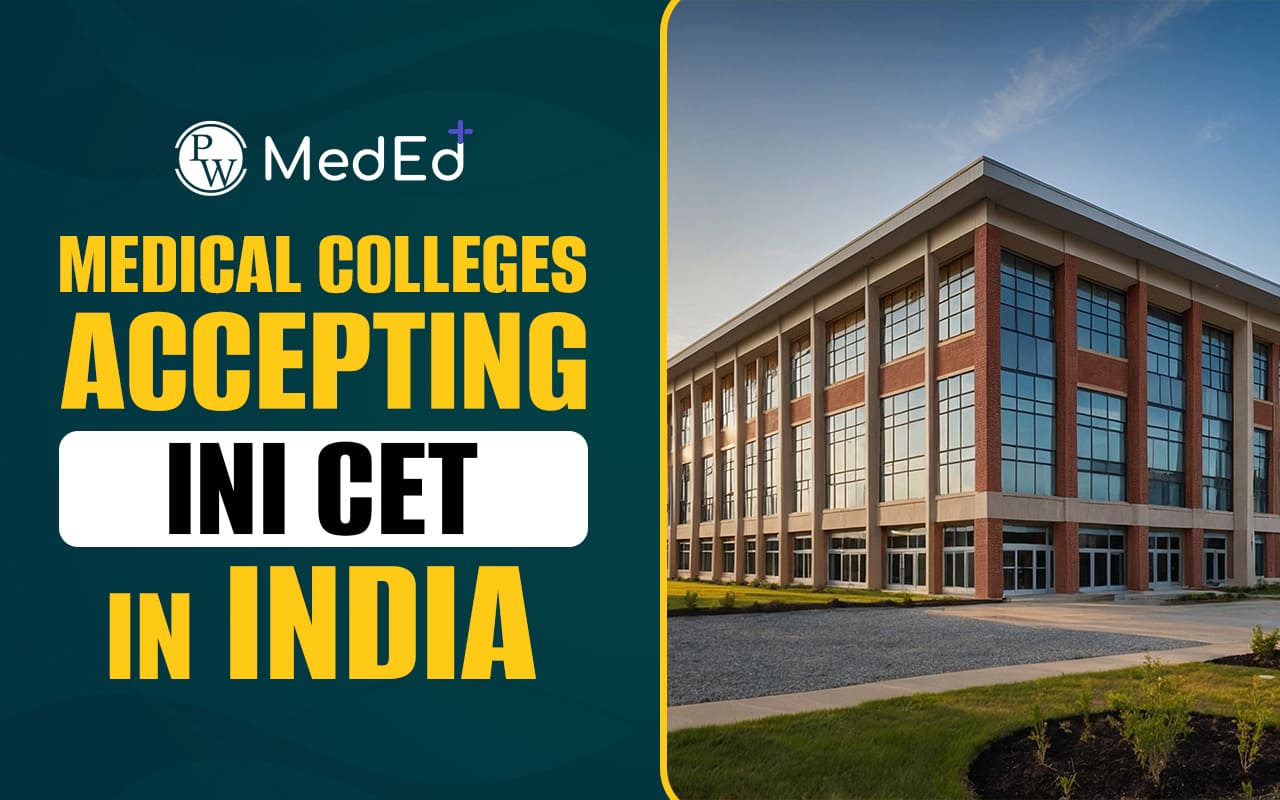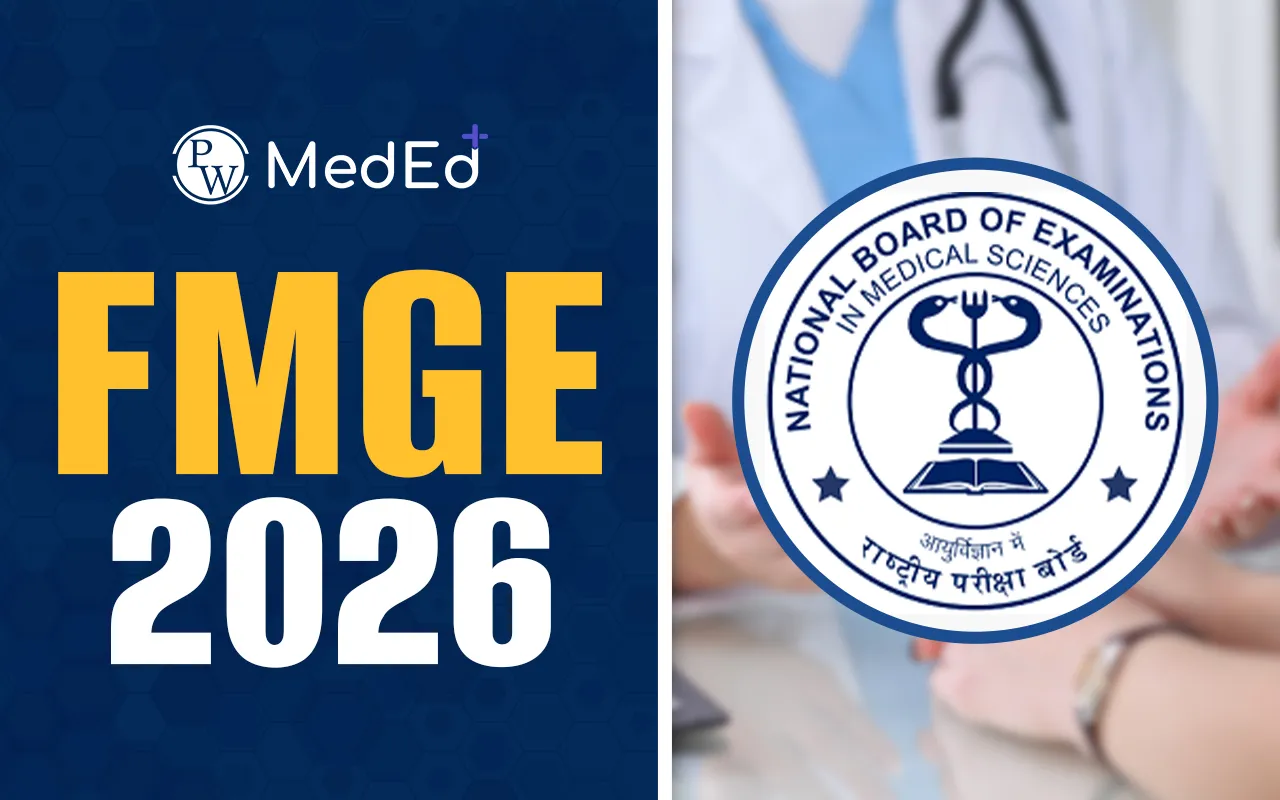
Microbiology is a crucial subject for NEET PG as it covers a significant portion of infectious diseases, immunology, and laboratory diagnosis. Having a strong command over microbiology not only helps in understanding the pathogenesis of various infections but also aids in clinical decision-making and diagnostics. This article provides a list of important microbiology questions categorized by topics, designed to help students prepare effectively for the NEET PG exam.
Please note: NEET PG exam will be MCQ-based, but we are providing you with theory questions along with answers because theory will give you a detailed understanding of the upcoming topics. This deeper knowledge will help you in answering the single-choice questions more accurately.
Download : PW Med Ed app
Microbiology Important Questions for NEET PG: General Microbiology
-
What are the differences between Gram-positive and Gram-negative bacteria?
Understanding the differences between Gram-positive and Gram-negative bacteria is fundamental as it influences their treatment and laboratory identification. The key difference lies in the structure of the cell wall and the way they react to Gram staining. -
Explain the various methods of bacterial gene transfer.
Bacterial gene transfer can occur through mechanisms such as transformation, transduction, and conjugation, each playing a significant role in genetic variation and the spread of antibiotic resistance. -
What are the different phases of bacterial growth?
Bacterial growth occurs in four distinct phases: lag, log, stationary, and death. Each phase has unique characteristics affecting bacterial reproduction and the efficacy of antimicrobial treatments. -
What are biofilms and their clinical significance?
Biofilms are clusters of bacteria that adhere to surfaces and are encased in a protective layer. They are clinically significant because they can lead to chronic infections and resistance to antibiotics. -
Discuss sterilization and disinfection techniques with examples.
Sterilization and disinfection are methods used to kill or remove microorganisms. Sterilization involves complete eradication, while disinfection only reduces microbial numbers. Examples include autoclaving for sterilization and alcohol-based solutions for disinfection.
Microbiology Important Questions for NEET PG: Immunology
-
Explain the differences between innate and adaptive immunity.
Innate immunity is the body’s first line of defense, involving non-specific mechanisms like physical barriers and phagocytosis, while adaptive immunity is a more specific response involving antibodies and memory cells. -
Describe the role of antigen-presenting cells (APCs).
APCs such as dendritic cells, macrophages, and B cells play a crucial role in initiating the immune response by presenting antigens to T cells, thereby triggering adaptive immunity. -
What are the different types of hypersensitivity reactions?
Hypersensitivity reactions are classified into four types: Type I (immediate), Type II (cytotoxic), Type III (immune complex-mediated), and Type IV (delayed-type) based on the mechanism of immune response involved. -
Explain the structure and function of immunoglobulins.
Immunoglobulins (Ig) are antibodies produced by B cells. They are crucial for immune defense and come in five major classes: IgG, IgA, IgM, IgE, and IgD, each with distinct roles in protecting the body. -
What is the role of cytokines in the immune response?
Cytokines are signaling molecules that mediate and regulate immunity, inflammation, and hematopoiesis. They play key roles in cell signaling and coordinating the immune response to infections.
Microbiology Important Questions for NEET PG: Bacteriology
-
Discuss the pathogenesis, clinical features, and laboratory diagnosis of Mycobacterium tuberculosis.
Mycobacterium tuberculosis causes tuberculosis, primarily affecting the lungs. It has a slow growth rate, and its diagnosis involves chest X-rays, sputum smear microscopy, and culture. -
What are the virulence factors of Staphylococcus aureus?
Staphylococcus aureus has several virulence factors, including the production of exotoxins and enzymes like coagulase, which contribute to its ability to cause a wide range of infections. -
Explain the laboratory diagnosis of enteric fever.
Enteric fever, caused by Salmonella typhi and Salmonella paratyphi, is diagnosed through blood culture, stool culture, and Widal test to detect antibodies against the bacteria. -
Describe the pathogenesis and laboratory identification of Clostridium tetani.
Clostridium tetani produces a neurotoxin that causes tetanus. Laboratory identification involves microscopic examination of stained specimens, culture, and clinical presentation. -
Differentiate between Streptococcus pneumoniae and Klebsiella pneumoniae.
Streptococcus pneumoniae is a gram-positive bacterium that causes pneumonia, while Klebsiella pneumoniae is a gram-negative bacterium known for causing hospital-acquired infections with a more severe clinical course.
Microbiology Important Questions for NEET PG: Virology
-
Explain the replication cycle of the human immunodeficiency virus (HIV).
The HIV replication cycle includes attachment, reverse transcription, integration into the host genome, transcription, translation, assembly, and release of new virions. -
Describe the structure and pathogenesis of the influenza virus.
The influenza virus has a segmented RNA genome and is known for causing seasonal flu epidemics. Its pathogenesis involves the infection of epithelial cells in the respiratory tract, leading to symptoms like fever and cough. -
What are the different types of viral hepatitis, and how are they diagnosed?
Hepatitis viruses include A, B, C, D, and E, each with unique transmission routes and diagnostic tests, such as serological assays for antibodies and viral antigens. -
Discuss the laboratory diagnosis of rabies.
Rabies is diagnosed through the detection of the virus in saliva, cerebrospinal fluid, or corneal smears. PCR and direct fluorescent antibody tests are commonly used for confirmation. -
Explain the mechanisms of antiviral drugs.
Antiviral drugs work by inhibiting various stages of the viral life cycle, such as viral entry, replication, or assembly. Drugs like acyclovir inhibit DNA polymerase, while protease inhibitors block the maturation of the virus.
Microbiology Important Questions for NEET PG: Mycology
-
Discuss the classification of medically important fungi.
Fungi are classified into four major groups: yeasts, molds, dimorphic fungi, and mushrooms. Medically important fungi include Candida, Aspergillus, and dermatophytes, which cause various infections in immunocompromised individuals. -
What are the laboratory methods used to diagnose fungal infections?
Laboratory diagnosis of fungal infections includes direct microscopy, culture techniques, and the use of specific stains such as potassium hydroxide (KOH) for skin scrapings. -
Explain the pathogenesis and clinical presentation of Candida infections.
Candida infections, commonly caused by Candida albicans, can range from superficial to systemic infections, presenting as oral thrush, vaginal candidiasis, or systemic candidiasis in immunocompromised individuals. -
Describe the diagnostic tests for Cryptococcus neoformans.
Cryptococcal infections are diagnosed using India ink staining of cerebrospinal fluid, culture on specific media, and serological tests for cryptococcal antigen. -
What are dermatophytes and how are they identified in the laboratory?
Dermatophytes are fungi that infect the skin, hair, and nails. They can be identified in the laboratory through KOH preparation, culture, and microscopic examination of skin scrapings.
Microbiology Important Questions for NEET PG: Parasitology
-
Explain the life cycle of Plasmodium and its clinical significance.
The Plasmodium life cycle includes stages in both the mosquito vector and human host. Clinical symptoms of malaria result from the parasite's destruction of red blood cells. -
What are the morphological differences between Entamoeba histolytica and Entamoeba coli?
Entamoeba histolytica causes amoebiasis and has a smaller, more compact nucleus with distinct chromatin, while Entamoeba coli has a larger, more irregular nucleus and is generally considered non-pathogenic. -
Describe the diagnostic features of Taenia solium and Taenia saginata.
Taenia solium and Taenia saginata are tapeworms differentiated by the presence of hooks in T. solium cysticerci, whereas T. saginata lacks hooks. Diagnosis involves stool examination and imaging for cysticercosis in the case of T. solium. -
What is the laboratory diagnosis of filariasis?
Filariasis is diagnosed by identifying microfilariae in blood smears, using PCR for detection, or serological tests to detect antibodies or antigens. -
Discuss the epidemiology and diagnosis of leishmaniasis.
Leishmaniasis is caused by Leishmania species transmitted by sandflies. Diagnosis involves blood smears, tissue biopsies, or serological testing to detect antibodies.
Microbiology Important Questions for NEET PG: Clinical Microbiology and Laboratory Diagnosis
-
What are the different staining techniques used in microbiology?
Common staining techniques include Gram staining, acid-fast staining for Mycobacterium, and methylene blue staining for identifying fungi and yeast cells. -
Discuss the principles of culture media used for bacterial isolation.
Culture media are designed to support the growth of specific organisms. Examples include nutrient agar for general bacterial growth, MacConkey agar for Gram-negative bacteria, and Sabouraud agar for fungi. -
What are antimicrobial susceptibility testing methods?
Methods such as the disk diffusion test, E-test, and broth dilution are used to determine the effectiveness of antibiotics against bacterial isolates. -
Describe the steps involved in blood culture processing.
Blood cultures involve the collection of blood samples, incubation in culture bottles, subculturing on appropriate media, and identification through microscopic examination, staining, and biochemical tests. -
How are nosocomial infections diagnosed in a hospital setting?
Nosocomial infections are diagnosed through laboratory cultures, surveillance data, and identification of risk factors like catheter use or recent surgeries in the hospital setting.
Tips for NEET PG Microbiology Preparation
Preparing for microbiology in NEET PG requires a strategic approach to cover high-yield topics and practice effectively. Here are some essential tips:
- Focus on High-Yield Topics: Prioritize topics like immunology, bacterial pathogenesis, and antimicrobial resistance to maximize your score.
- Practice MCQs Regularly: Solving previous years’ questions and mock tests will improve your speed, accuracy, and retention.
- Revise Clinical Cases: Understanding case-based scenarios is key to applying microbiological knowledge in clinical settings.
- Use Mnemonics & Flowcharts: These are helpful tools for memorizing complex concepts, such as viral structures and immune system functions.
- Follow Standard Textbooks: Books like Jawetz, Ananthanarayan & Paniker, and Levinson & Jawetz provide clarity and detailed explanations on important microbiology topics.
Microbiology is a vital subject in the NEET PG exam, and systematic preparation focusing on conceptual understanding and clinical applications will enhance your performance. By consistently practicing important questions and revisiting high-yield topics, aspirants can improve their knowledge and confidence in this area.
Ace the NEET PG exam for the dedicated career in medicine. Download the PW Med Ed app to get dedicated faculty guidance!Microbiology Important Questions for NEET PG FAQs
What is the significance of microbiology in NEET PG?
What are the differences between Gram-positive and Gram-negative bacteria?
How do bacterial gene transfer methods contribute to antibiotic resistance?
What is the role of antigen-presenting cells (APCs) in immunity?
What are the different staining techniques used in microbiology?








